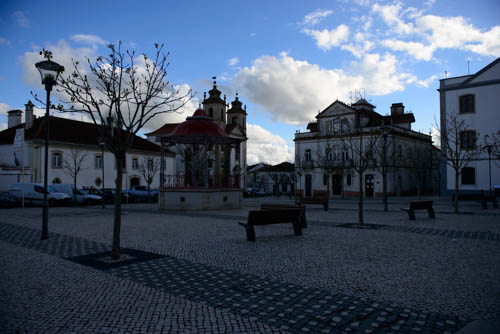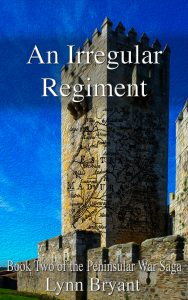 An Irregular Regiment is the second book in the Peninsular War Saga, which follows the men and women of the fictional 110th infantry through the long years of the war in Portugal and Spain. After a painful and difficult love affair, Paul has married the love of his life and is about to face new challenges as Lord Wellington offers promotion at a price.
An Irregular Regiment is the second book in the Peninsular War Saga, which follows the men and women of the fictional 110th infantry through the long years of the war in Portugal and Spain. After a painful and difficult love affair, Paul has married the love of his life and is about to face new challenges as Lord Wellington offers promotion at a price.
It is 1810 and Major Paul van Daan and the 110th prepare to meet the French on the ridge of Bussaco in Portugal. Back on the battlefield only two weeks after his scandalous marriage to the young widow of Captain Robert Carlyon, Paul is ready for the challenge of the invading French army.
But after a successful battle, Lord Wellington has another posting for his most unorthodox officer and Paul and Anne find themselves back in Lisbon dealing with a whole new set of challenges with army supplies, new recruits and a young officer who seems to represent everything Paul despises in the army’s views on discipline and punishment. Anne is getting used to life as the wife of a newly promoted regimental colonel as two other women join the regiment under very different circumstances. And an old adversary appears in the shape of Captain Vincent Longford whose resentment at serving under Paul is as strong as ever.
It’s a relief to return to the field, but Paul finds himself serving under the worst General in the army in a situation which could endanger his career, his regiment and his life. Given a brief by Wellington which requires Paul to use tact and diplomacy as well as his formidable fighting skills, it’s hardly surprising that the army is holding its breath waiting for Wellington’s newest and most explosive colonel to fail spectacularly.
What the reviewers say about An Irregular Regiment
“Another exciting installment…the relationship between Paul and his wife is developed…all in all, a very well-researched and engrossing tale.”
“Historical and fictional characters rub shoulders effortlessly, and real events shape the fortunes of the characters as they move through the Peninsular War.”
“Good plot that is fast paced, the characters are well thought out and very likeable. A very hard book to put down.”
“I’m really enjoying these. Want another now please . The whole family of characters just make you read on to find out what’s happening next.”
“The setting in the Peninsular War is a solid and satisfying base. The conduct of the war is written with a light but satisfying touch for the romances between the well drawn characters. It is a good read.”
Settings
An Irregular Regiment covers a much shorter time period than the first book in the series, spanning only six months. Once again, unless stated otherwise, these photographs are the work of my talented husband Richard.
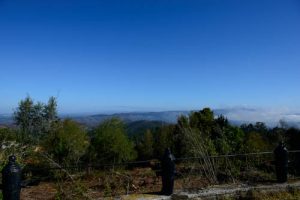
The book opens with the Battle of Bussaco, with Paul and Anne newly married. Wellington deployed his army along the top of the ridge. In 1810 the slopes were not heavily wooded as they are now. The view from the heights gives a strong sense of the challenge the French faced when attacking Wellington’s men.
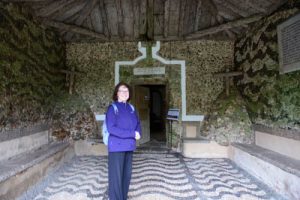
A convent at the top of the ridge became Wellington’s headquarters. The convent still exists, although now it is surrounded by the house and grounds of the spectacular Bussaco Palace Hotel, which was built at a later date. I will admit to becoming ridiculously excited at visiting the convent where Wellington and his staff spent the night following the battle. We stayed one night in the hotel, which is beautiful. Reviews had not been universally good, but the only criticism I could make of the place is that the rooms were somewhat dated, although very comfortable. Breakfast was amazing and the staff were wonderful.
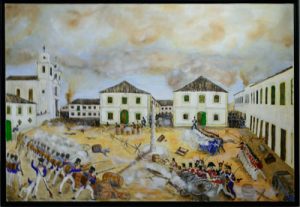
The 110th were engaged at the combat of Sobral as Massena’s army tested Wellington’s defences. Wellington had done a good job of keeping the building of the Lines of Torres Vedras secret and they came as a shock to the advancing French. There is a painting of the combat in the main square in Sobral in the local museum, and it was amazing to stand in the square and realise how little the 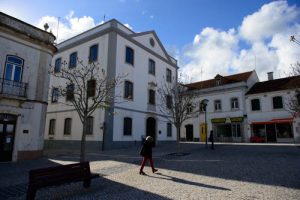 building have changed since 1810.
building have changed since 1810.
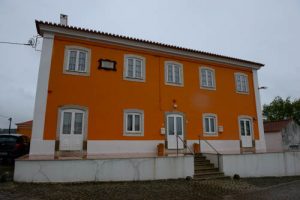
Lord Wellington set up his headquarters in a large house in the village of Pero Negro. He chose the location carefully in terms of communications along the lines, close to a semaphore station, and within reach of his other commanders. In the novels, the 110th is based at a deserted convent nearby. Convents, monasteries and other religious buildings were frequently used as accommodation by both French and British troops.
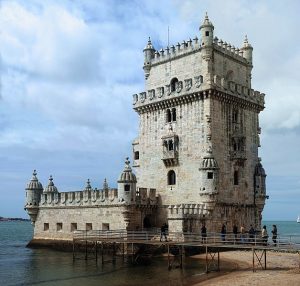 Part of the book is set in Lisbon. The Portuguese capital had been liberated from the French several years earlier and was a big supply depot for Wellington’s army. It also housed thousands of refugees who had fled the French advance, under instruction from Wellington who wanted to leave the countryside bare to starve out the French. When Paul and Anne arrive in late 1810 with a brief from Wellington to work on the supply chain and take charge of some new recruits, the refugee problem was becoming a crisis. My free short story, written for Christmas in 2017, is entitled A Regimental Christmas and gives a brief glimpse into the plight of the refugees.
Part of the book is set in Lisbon. The Portuguese capital had been liberated from the French several years earlier and was a big supply depot for Wellington’s army. It also housed thousands of refugees who had fled the French advance, under instruction from Wellington who wanted to leave the countryside bare to starve out the French. When Paul and Anne arrive in late 1810 with a brief from Wellington to work on the supply chain and take charge of some new recruits, the refugee problem was becoming a crisis. My free short story, written for Christmas in 2017, is entitled A Regimental Christmas and gives a brief glimpse into the plight of the refugees.
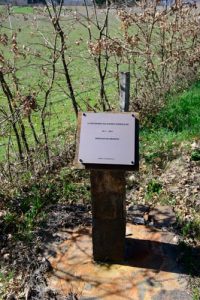
Back with the regiment in early 1811, Paul is in action during Massena’s retreat, as Wellington’s army harried the French out of Portugal. After a series of actions, the final battle of the book takes place at Sabugal.
At Sabugal, Wellington’s plans were sabotaged by morning fog and the incompetence of Sir William Erskine, who was in temporary command of the Light Division. In the photograph, the area of water visible is a reservoir which was not there in 1811 and would have been the location of the Light Division advance. Despite the changes in terrain, it is very easy to see how the battle unfolded.
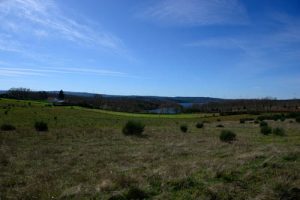
For battlefield guides, we found Andrew Rawson’s guide the most helpful although we also used Julian Pagnet’s book. It’s essential to have a car to do most of the tours we did, and I’m grateful for my husband’s driving as well as his photography skills.
For those who would prefer an organised tour, Campaigns and Culture run excellent tours to many of Wellington’s battlefields, although there are other companies as well. Number One London runs historic tours in the UK but also does a marvellous Waterloo tour which is worth taking a look at.
I always love to hear from readers or visitors to the website, so please leave a comment, or even better, click on the link to subscribe and you’ll be notified of updates and news. I am on facebook and twitter as well.

